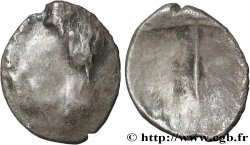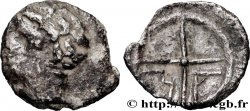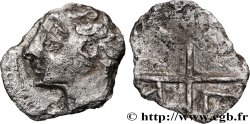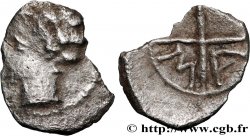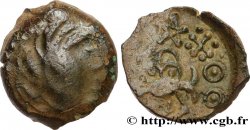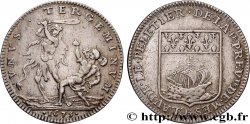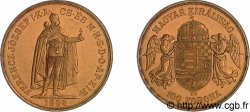v41_1532 - SALUVII Hémiobole à la tête de satyre et à la corne
MONNAIES 41 (2009)
Начальная цена : 250.00 €
Назначить цену : 450.00 €
непроданный лот
Начальная цена : 250.00 €
Назначить цену : 450.00 €
непроданный лот
Тип Hémiobole à la tête de satyre et à la corne
Дата: après 49 avant J.-C.
Металл: silver
Диаметр: 7,5 mm
Ориентация осей монеты: 6 h.
Вес: 0,27 g.
Редкость: R3
Комментарии о состоянии
Flan très court et irrégulier, avec un droit un peu confus, mais un très beau revers avec une frappe vigoureuse et une patine homogène
Лицевая сторона
Аверс: легенда: ANÉPIGRAPHE.
Аверс: описание: Tête masculine à droite.
Обратная сторона
Реверс: легенда: ANÉPIGRAPHE.
Реверс: Описание: Une sorte du virgule.
Комментарий
Cette rare obole manque à tous les musées consultés. Cet exemplaire est très proche du n° 96 de MONNAIES II. Le n° 539 vendu dans MONNAIES XXVI l'a été à 366€ sur un ordre de 1001€ !.
This rare coin is missing from all the museums consulted. This example is very close to issue 96 in COINS II. Issue 539 sold in COINS XXVI for €366 on an order of €1,001!
This rare coin is missing from all the museums consulted. This example is very close to issue 96 in COINS II. Issue 539 sold in COINS XXVI for €366 on an order of €1,001!








 Cообщить об ошибке
Cообщить об ошибке Распечатать страницу
Распечатать страницу Отправить мой выбор
Отправить мой выбор Задать вопрос
Задать вопрос Consign / sell
Consign / sell
 Информация
Информация